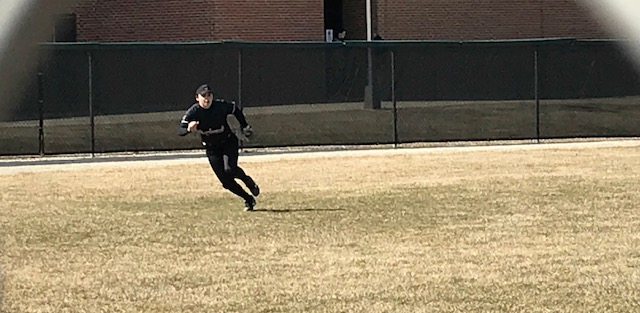
I have written in the past about how many parents of travel ball and high school players view the outfield as a punishment or a sign that their coach believes their child somehow doesn’t measure up to her teammates. They will tell anyone who will listen that their daughter “deserves” to be in the infield – I guess because the cool kids play infield and the nerds play outfield.
Yet as the recent Womens College World Series (WCWS) demonstrated once again great outfield play is often the difference between winning and losing – as well as advancing or going home.
The obvious ones are the spectacular catches – going up over the wall to rob an opposing hitter of a home run. Those are dramatic and make for great candidates for endless SportsCenter Top 10 replays.
Yet those are also the rarities. Often the difference-makers are more the everyday plays or even the approaches to the position that the best teams adopt to ensure their success.
Here’s a good example from my own observations. As I was watching one of the teams warm up I looked at how their outfielders were throwing the ball back to the coach hitting fungoes.
It is common practice among colleges to recruit the best athletes then put them into positions where they are expected to use their athleticism. (The stated exceptions are pitchers and catchers, who are recruited specifically by position.)
As a result, many college players at all positions were once shortstops on their travel and/or high school teams. The best defensive players out of that group will actually play shortstop, and the rest will be spread around to other positions based on need or their ability to hit.
As I watched those outfielders it was clear that was the case for this team. All their throws were that quick, low arm slot, almost sidearm throw that shortstops make. That type of throw is great within a certain range, but after that range it can be a liability.
Sure enough it was during the game. I remember at least two balls hit to medium-deep left or left center where the outfielder picked up the ball and “shortstopped” the throw to third as a speedy runner went for the extra base.
Understand these weren’t balls to the fence. They dropped in front of the fielders.
As expected, the throws took two or three hops to get to third. By that time the runners had already safely slid in and stood up – it wasn’t even close.
A better, stronger outfield throw would have at least given them a chance to get the out. But it didn’t happen and the runners ended up scoring later.
Another example came during one of the Oklahoma State/Texas games. It was the play that was shown endlessly with the miscues that pretty much let Texas back into the game.
If you watch closely, when the throw goes to second after being cut off, the center fielder and the left fielder are nowhere near the line of the throw. When it goes awry, the center fielder has to chase the ball down to the outfield fence, which allows the runners to keep running.
Had she moved to the line of the throw earlier the damage may have been minimized and perhaps we would have seen an all-Oklahoma WCWS instead. We’ll never know.
Throughout the whole NCAA tournament we also saw examples of outfielders diving for balls when they didn’t need to only to see the ball skip past them for extra bases. We saw outfielders lose a ball in the lights or the sun because they didn’t shade their eyes properly or were using a closed-web infielder glove instead of an open web outfielder glove.
We saw balls drop between two outfielders or out fielders and infielders because the outies weren’t forceful enough in calling off the innies (which is what they should do, because they have priority). We even saw simple catches botched because outfielders were trying to make a throw before they caught the ball or just didn’t track the ball well enough.
These types of plays happen every day at levels of competition. And unlike an error in the infield, where most play is self-contained, problems in the outfield can quickly be amplified because there is no one behind them to help minimize the damage.
All of this points to the importance of having a well-trained outfield that is focused on their own position instead of why they’re not playing in the infield. Taking enough pride in outfield play to learn how to read the ball off the bat, re-learn to throw for more power and distance, and develop the type of situational awareness and focus required when the ball comes your way just a few times a game is invaluable to a team’s overall success.
So if you/your daughter is assigned to the outfield, don’t feel like the coach is saying you are “less than.” Instead, look on it as an opportunity to make a huge contribution to your team’s success and be the best outfielder you can be.
In other words, make sure you’re a difference-maker.
Credit : Source link






